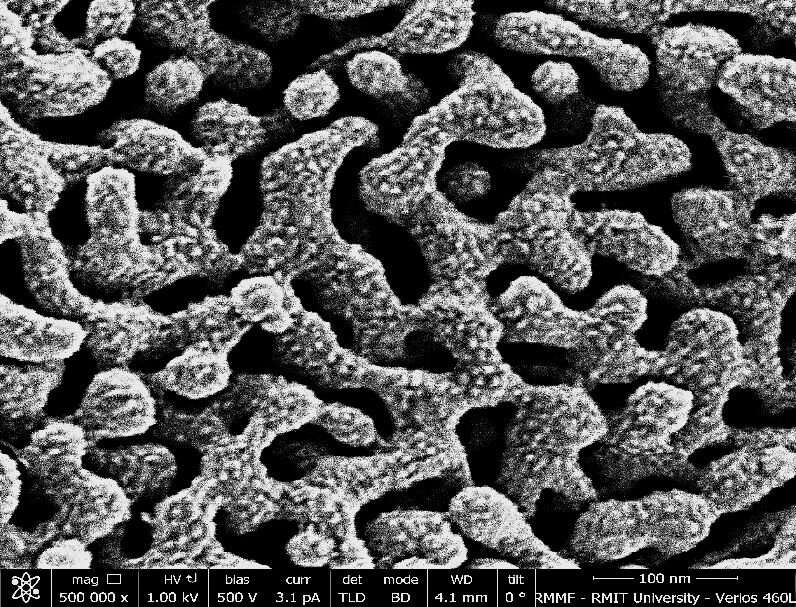Phys.org December 13, 2021
The ions released from the metal’s surface are toxic to bacterial cells. But this process is slow when standard copper is used. Researchers in Australia used a special copper mold casting process to make the alloy, arranging copper and manganese atoms into specific formations. The manganese atoms were then removed from the alloy using dealloying leaving pure copper full of tiny microscale and nanoscale cavities in its surface. The resulting copper is composed of comb-like microscale cavities and within each tooth of the comb structure are much smaller nanoscale cavities; it has a massive active surface area. The pattern also makes the surface super hydrophilic so that water lies on it as a flat film rather than as droplets. The hydrophilic effect makes bacterial cells struggle to hold their form as they are stretched by the surface nanostructure, while the porous pattern allows copper ions to release faster causing structural degradation of bacterial cells, making them more vulnerable to the poisonous copper ions, but also facilitates uptake of copper ions into the bacterial cells. In tests the new alloy destroyed more than 99.99 percent of the golden staph bacteria cells in just two minutes…read more. TECHNICAL ARTICLE

The copper magnified 500,000 times under a scanning electron microscope shows its tiny nano-scale pores. Credit: RMIT University